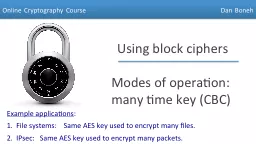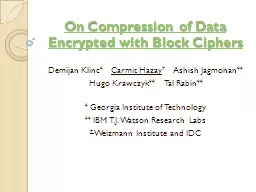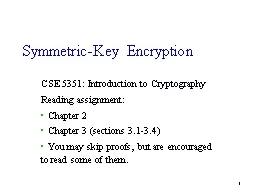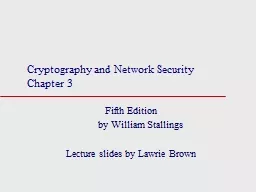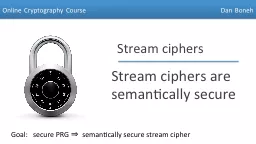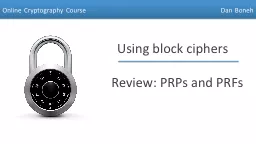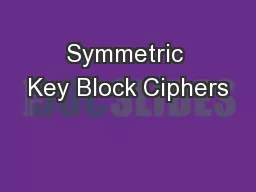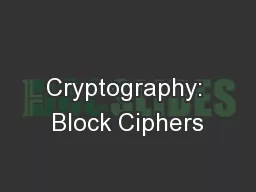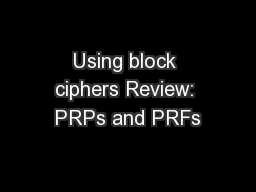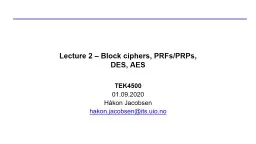PPT-Using block ciphers
Author : ellena-manuel | Published Date : 2015-10-02
Modes of operation many time key CBC Online Cryptography Course Dan Boneh Example applications 1 File systems Same AES key used to encrypt many files
Presentation Embed Code
Download Presentation
Download Presentation The PPT/PDF document "Using block ciphers" is the property of its rightful owner. Permission is granted to download and print the materials on this website for personal, non-commercial use only, and to display it on your personal computer provided you do not modify the materials and that you retain all copyright notices contained in the materials. By downloading content from our website, you accept the terms of this agreement.
Using block ciphers: Transcript
Download Rules Of Document
"Using block ciphers"The content belongs to its owner. You may download and print it for personal use, without modification, and keep all copyright notices. By downloading, you agree to these terms.
Related Documents

